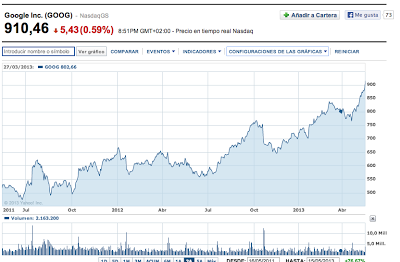In recent years, renewable energy investment has increased in popularity largely because the world is becoming increasingly aware that the current economic model is based on finite resources and this has to change. Although crude oil and other fossil fuels will last us for the foreseeable future, there will come a time when our energy consumption will have to look for alternative and renewable sources.
And here come into play renewable energy, although this sector is still relatively immature in global terms, the growth opportunities presented are huge and it is worth considering exposure to renewable energy.
How to invest in alternative energy?
Biofuels:
Biofuels are an alternative form of energy derived from carbon based organisms. There are many different options including bio-alcohols, biodiesel, green diesel, vegetable oil ... Recently, the International Energy Agency has stated that biofuels have the potential to replace 27% of transport fuels by 2050, effectively reducing emissions greenhouse gases by 2.1 million tons per year. Even some countries already have existing mandates requiring companies to blend biofuels with gasoline, giving these various fuels with high growth potential.Some companies with which exposure to biofuels, and thereby to alternative energies are:
- Archer-Daniels-Midland Company (ADM) company dedicated to the production of different agricultural commodities and also has many of its operations based in the biofuels industry.
- Methanex Corporation (MeOH): this is a company dedicated to the production and sale of methanol, a chemical that, among other things, is a very popular agent mixed with gasoline. Methanol is also one of the key components of biodiesel. MeOH pays a dividend yield of 2.6%.
Hydropower:
Hydroelectric power has become the most powerful energy alternative at this time, but of the least popular. Hydropower generates water currents moving and exercising more on large dams and rivers.It is presented as one of the alternative energy sectors with greatest growth opportunity.
- China Hydroelectric Corporation (CHC): This company is engaged in the acquisition, ownership and development of hydropower in China. HCC has assets of $ 77 million.
- Zhaoheng Hydropower Ltd. (ZHYLF.PK): Zhaoheng generates electricity mainly in the southern and midwestern China.
Nuclear:
After the tragedy of Fukushima has questioned the safety of many nuclear plants, and that is why Germany has completely abandoned nuclear power. But with the new facilities are much safer and more efficient nuclear plants like Fukushima, so that investors take into account this energy Fuenta its considerable growth potential.We expose ourselves to nuclear energy by investing in ETFs or companies related to these materials:
- Market Vectors Uranium + Nuclear Energy ETF (NLR): This ETF provides direct exposure to nuclear energy because it has stakes in companies such as Exelon Corp, Uranium One, and Areva engaged in the manufacture of this alternative energy.
- Uranium ETF (URA) ETF focuses on the mining of uranium it is considered a direct exposure to nuclear energy and impact the growth of this industry.
Solar:
The solar energy sector is the fastest growing developed in recent years, and a favorite for investors. The industry is still relatively small, but has an average growth of 39% annually over the last decade and a strong predictions for the future. For now, China dominates the solar market, and most companies base their operations in emerging markets.To be exposed to this alternative energy we can choose companies or ETFs:
- First Solar, Inc. (FSLR): This US-based company is one of the best known in the solar energy sector. Even after the death of CEO of First Solar the company's future is uncertain.
- Market Vectors Solar Energy ETF (KWT): This ETF invests in companies that, on a weighted basis, get a 90% or more of their income from the solar energy sector. The main investments of the fund are in companies like First Solar, GT Solar and MEMC Electronic Materials.
Aeolian:
Wind power is one of the most established alternative energy in the world, and many countries have chosen it as an alternative to fossil fuels. Currently, wind power amounts to just over 2% of the world's energy supply, but its growth rate is increasing, and this figure is expected alcanzace 8% in 2018. Like so many other forms of renewable energy, energy companies are hard to find in equities, but this trend will change as the industry continues to grow.- Broadwind Energy, Inc. (BWEN) sector company wind energies, based in Chicago. Owns more than $ 44 million in assets.
- Iberdrola SA (IBE.MC): This Spanish utility company, is part of your business based on wind energy production by Iberdrola Renovables, so it is an attractive investment option.
- ISE Global Wind Energy Index Fund (FAN): a fund that focuses all his interest in the wind industry. Your participation is divided into different companies, those companies which are exclusively in the wind business receive a higher weight than those with a broader business model.















